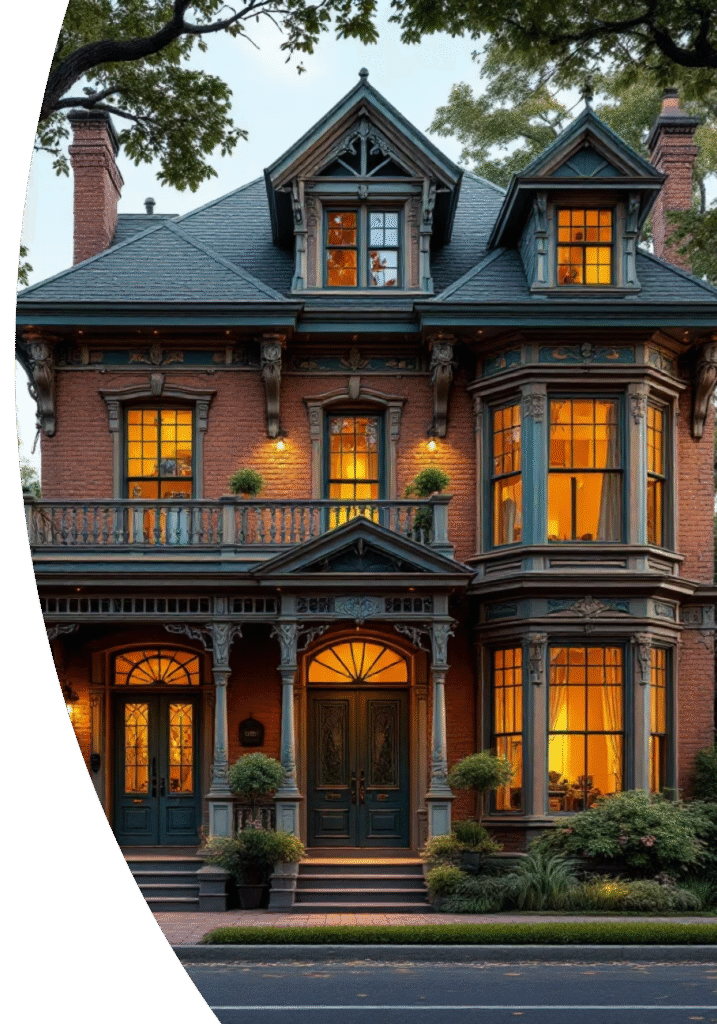Unseen Asbestos Risks in Older Properties
Discover the hidden asbestos risks in older properties. Learn where asbestos is commonly found, why it’s dangerous, and how homeowners, landlords, and renovators can stay safe whilst preserving the charm of historic buildings. The Silent Threat Older homes and buildings carry unique charm, but they may also hide a silent threat: asbestos. Once a popular building material prized for its durability and fire resistance, asbestos is now recognised as a serious health hazard lurking in properties across Britain. Who’s at Risk? For anyone buying, renovating, or managing an older property, understanding asbestos risks is absolutely crucial. This includes homeowners undertaking improvements, landlords maintaining rental properties, and property managers overseeing multiple buildings constructed before the 1980s. What Is Asbestos? Asbestos is a naturally occurring mineral fibre once widely used in construction due to its remarkable strength, excellent insulation properties, and exceptional resistance to fire and heat. These qualities made it seem like a miracle material for builders and architects throughout much of the 20th century. Buildings constructed or refurbished before the 1980s are most likely to contain asbestos materials. Whilst asbestos is no longer used in new construction today, it may still be present in millions of older homes, rental properties, and commercial buildings across the UK. Key Point: The use of asbestos was gradually phased out, with a complete ban coming into effect in 1999 in the UK. Where Asbestos Hides in Older Properties Asbestos was incorporated into a remarkably wide range of construction materials, making it potentially present throughout older buildings. Understanding common locations is essential for property owners and managers. Insulation Systems – Found around boilers, heating pipes, water tanks, and throughout attic spaces. Pipe lagging and boiler insulation were particularly common applications. Flooring Materials – Vinyl tiles, floor adhesives, linoleum backing, and underlayments. These materials were especially popular in kitchens and bathrooms during the mid-20th century. Walls and Ceilings – Textured coatings like Artex, decorative plaster finishes, ceiling tiles, and partition walls. These decorative elements were widely used from the 1960s onwards. Exterior Features – Corrugated roofing sheets, soffits, fascia boards, guttering, and downpipes. Asbestos cement products were particularly durable for outdoor applications. Fire Protection – Fire doors, protective panels around heating systems, and fireproof partitions. Asbestos’s fire-resistant properties made it ideal for safety applications. Because asbestos was often mixed with cement, adhesives, or other binding materials, it can be extremely difficult to identify without professional testing and laboratory analysis. Why Asbestos Is Dangerous The danger arises when asbestos-containing materials are disturbed—during renovations, repairs, or natural deterioration over time. At that point, it releases microscopic fibres into the air that are invisible to the naked eye, can remain airborne for hours, and are extremely harmful when inhaled. Asbestosis – Progressive lung scarring causing chronic breathing difficulties, persistent cough, and chest pain that worsens over time. Lung Cancer – Significantly higher risk of developing lung cancer, particularly dangerous for smokers who face multiplied risks. Mesothelioma – A rare, aggressive cancer affecting the lining of lungs or abdomen, caused almost exclusively by asbestos exposure. Symptoms may take 20–50 years to appear after initial exposure, making asbestos one of the most insidious health hazards in the construction industry. Renovation and DIY Risks DIY projects and home renovations represent the biggest asbestos risk factors for property owners. Well-meaning homeowners and inexperienced contractors can unknowingly create dangerous situations. High-Risk Activities The Consequence Without proper precautions, safety equipment, and professional expertise, these seemingly routine activities can release thousands of dangerous fibres into the air, putting everyone in the property—and neighbouring homes—at serious risk of exposure. How to Stay Safe from Asbestos Don’t Disturb It – Intact asbestos materials that remain undamaged may be safer left alone. Avoid drilling, cutting, or breaking suspected materials. Arrange Professional Survey – Licensed asbestos surveyors can identify, assess, and document risks throughout your property using proper sampling techniques. Follow Legal Requirements – Landlords and property managers have statutory duties under the Control of Asbestos Regulations to manage asbestos safely. Use Licensed Contractors – Never attempt DIY asbestos removal. Always use HSE-licensed contractors with proper equipment and disposal methods. Monitor Regularly – Keep detailed records and regularly inspect asbestos-containing materials to ensure they remain undamaged and secure. Protecting Your Property and Health The hidden risks of asbestos in older properties should never be underestimated. Whilst many homes with asbestos-containing materials remain perfectly safe when left undisturbed, serious problems arise during renovation work, accidental damage, or long-term neglect. The safest approach combines awareness, proper professional testing, regular monitoring, and expert management when removal becomes necessary. Source: www.emlinbusinessconsulting.com

